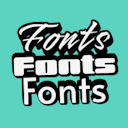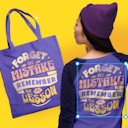Product
Templates
Resources
Company
Home
Blog
Tutorials
How to build a personal brand: 20 tips for designers and creators
How to build a personal brand: 20 tips for designers and creators

For designers and creators, building a strong personal brand isn’t just about standing out – it’s a tool to showcase your talent and values in a way that attracts your ideal audience and builds a community of advocates.
Whether you're just starting or looking to refine your approach, these 20 tips to build a personal brand will guide you through how to strategically develop a memorable identity. We'll separate these tips into three pivotal sections and follow a natural progression of steps, from defining your identity to celebrating your success.
Let’s jump in and learn how to build a personal brand that’ll set you apart, capture a dedicated audience, and grow your image.
Table of contents
What is a personal brand?
A personal brand is the combination of your skills, values, and personality that shapes how others perceive you. It’s not just your portfolio or resume - it’s an overall image and story you tell through your work, online presence, and interactions. For designers and creators, your personal brand is what sets you apart in the industry, showing potential clients or collaborators who you are and why they should work with you.
Think of it as your reputation - a strong and positive reputation is what encourages you to opt for one design tool brand over another, for example.
Through the personal branding tips we list below, you can leverage your brand image to attract and build your ideal audience.
You can find these tips explained in video format in our free masterclass below. Give it a watch to hear Production Manager and Graphic Designer, Drew, break down each of the points.
Section 1: Develop
1. Define your brand identity
A strong personal brand begins with defining your identity, which is essentially your brand’s personality. Outline who you are, what you stand for, and how you want others to experience you.
Let's look at Kittl as an example - Our rebrand strengthens our brand identity as a community-driven, designer-focused platform "for designers, by designers," that values creativity, innovation, and authenticity.

The best way to approach this is by choosing three to five key values or keywords that accurately describe your personality, strengths, and aspirations. The goal here is to be authentic rather than aspirational – pick values you truly embody and will showcase moving forward.
Here are 10 example terms commonly used to describe brand identities that are particularly relevant for designers and creators:
- Minimalist – clean, simple, and uncluttered.
- Whimsical – quirky, imaginative, and fanciful.
- Dynamic – energetic, lively, and constantly evolving.
- Vintage – nostalgic, timeless, and classic.
- Organic – natural, earthy, and sustainable.
- Edgy – unconventional, provocative, and bold.
- Futuristic – high-tech, visionary, and ahead of its time.
- Inclusive – diverse, welcoming, and people-focused.
- Empowering – inspiring, uplifting, and confidence-boosting.
- Nurturing – supportive, caring, and compassionate.
This first step is often overlooked but crucial for several reasons:
- Brand building: You’ll convey these traits through external elements, such as color, design, logo, language, and consumer-facing interactions (we’ll dive into this more below).
- Guiding compass: These values will act as a guide for everything you do, from how you talk about yourself on social media to the kinds of projects you take on.
- Consistency: By having these words in mind, you’ll naturally convey a consistent message about who you are.
Next steps
- Self-reflection: Using the list above as a reference or starting point, make a short list of personality traits and professional strengths. If you’re stuck, think about the compliments you hear most often from clients or colleagues.
- Narrow it down: Pick three to five traits that feel most true to you and relevant to the image you want to project.
- Test them out: Try weaving these words into your website copy, social media bios, and email signatures. Play around with different synonyms to vary your message and solidify it. Over time, notice if they still resonate or if you need to tweak them.
Compare the two brand identities below - both are fitness and wellness brands but the visual elements convey completely different personalities: one bold and playful, one calming and delicate.
2. Specialize and solidify your skills
It may be tempting to state you offer everything as a designer or creator, but there are some key reasons why this route may not be best for you.
Specializing in a niche can boost your credibility – and help you stand out. So you’ll want to take the time to identify your niche – whether it’s illustration, typography, or UX design – and make it clear that it’s your specialty.
You can further solidify yourself as an expert in this area by hosting design webinars or workshops (check out Teachable, Udemy, and Squarespace). This is also a unique way to promote your brand and highlight your topic authority.
Next steps
- Identify your niche: Reflect on what you love doing most and where you see the best outcomes for clients.
- Level up: Take advanced courses or attend specialized workshops in that area. Platforms like Teachable, Udemy, or even a self-hosted course on Squarespace can help you learn as well as teach.
- Expand your reach: Offer free mini-tutorials or behind-the-scenes looks at your process on social media. This will help expand your reach, solidify your topic authority and build credibility in a similar way to hosting on teaching platforms. You can leverage a following as a testimonial to viewer interest in your work.
You may hesitate to commit to a niche, worrying it will limit you in the future – but it won't. Once you're recognized in that niche, you can still expand or shift focus when the time feels right. It's common for specialists to master one area and later branch out to develop new skills.
You can find hundreds of tutorials, tips, and educational design content on Kittl's YouTube channel. This is an excellent way to grow your design skills for free with knowledge from expert graphic designers, UX designers, POD sellers, marketers, and more.
3. Create a personal brand statement
A personal brand statement, similar to a mission statement, is a concise way of communicating who you are, what you do, and why it matters. It’s essentially a sentence or short paragraph conveying your professional identity and gives potential clients or collaborators a quick snapshot of what sets you apart.
Think of it as a quick elevator pitch – something you can use on your website, LinkedIn profile, or even networking events. It’s a key way to help you stand out, show off your strengths, and position you as an expert in your field. When crafting your personal brand statement, consider your tutoring rates and the value you bring to your clients. By clearly outlining your expertise and pricing, you build trust and give potential clients the information they need to make an informed decision.
In an online world full of noise, a quick summary of your expertise can hook the right audience. So you’ll want to make sure it’s clear and impactful.
Copywriters excel at this. Here’s a collection of some of the best copywriting portfolios to reference – notice how they present themselves through strategic word choices and seamless user experiences. You’ll also see how their personality shines through in their writing.
Next steps
- Brainstorm: Write down the key elements – your role (designer, illustrator, UX pro), your niche or specialty, and the value you bring (e.g., “helping small businesses shine”).
- Refine: Aim for one to two sentences max. Keep it direct and personable, reflecting your chosen brand voice.
- Use it everywhere: Place it at the top of your LinkedIn summary, in your Instagram bio, and your website. Continuity ensures people see it again and again.
For instance, a simple statement could be: “I’m Jane Doe, a UX designer who crafts intuitive digital experiences that keep people at the heart of every solution.”
See the below example of our mission statement here at Kittl: "Kittl makes it simple to create professional designs — just the right tools, no unnecessary extras." We use this statement to communicate who we are, what we do, and who we're here for.

4. Align messaging and voice with your brand values
Your visuals may grab attention, but it's your voice that keeps people engaged – whether it's through Instagram captions, website copy, or emails. Your brand voice should be a natural extension of your personality and reflect your core values.
This is important because an authentic voice fosters a genuine connection, helping to build trust. Additionally, a distinct and consistent voice makes your brand more memorable, standing out in a sea of generic or overly formal communication.
For support with this step, turn to copywriting website portfolios again and study their tactics. You’ll find they craft strategic copy that showcases their personality, writing style, and even values.
Next Steps
- Pick your tone: Are you friendly and conversational, or are you more polished and technical? Choose a tone that fits your values (e.g., “approachable” = warm, slightly casual language).
- Use real stories: Sharing relevant anecdotes or personal experiences with design projects can help reinforce core values, such as “dedicated,” “experimental,” or “innovative.”
- Stay consistent: Once you choose a voice, apply it everywhere – bio sections, emails, proposals, blog posts. Clients should feel the same “vibe” no matter where they read your words.
Don’t try to perfect your writing skills here – that’s not the goal. You need to write as yourself in a purposeful way.
5. Develop your brand story
A brand story is the personal narrative behind your work – the why and the how that led you to where you are. Sharing that story humanizes your brand, allowing people to see the real person behind the polished portfolio.
It also helps create an emotional engagement between you and your audience because stories are more memorable than plain facts or feature lists.
If you’re able to share vulnerabilities or challenges you've overcome, you can appear more authentic, relatable, and trustworthy as a brand.
Next Steps
- Identify pivotal moments: What key events shaped your passion for design? Was it a childhood fascination with comic book art, or a career switch from a corporate job?
- Weave in your values: Connect these moments back to the brand values you defined in the first step. Show how they guide your decisions and approach.
- Share across channels: You can do this via a blog post, an “About Me” video, or a highlight reel on Instagram. The goal is for people to know your story wherever they discover you. Sharing your story on social media can help build a community around your brand by resonating with and inspiring aspiring designers.
6. Set measurable goals and track your progress
The journey to building a powerful personal brand requires setting measurable goals. By defining clear objectives – such as reaching 1,000 followers or landing five new clients – you’ll create a roadmap for what “success” looks like.
This approach is crucial because goals provide focus and direction, helping you prioritize tasks that align with your vision. Additionally, tracking progress keeps you motivated, offering a sense of achievement as you move forward.
Did you know that vision boards are proven to be highly effective tools for achieving goals?
In a TD Bank survey of 1,127 individuals and 500 small business owners across the U.S., one in five of the small business owners used vision boards when starting their business. Of those surveyed, 82% who used a vision board from the start found they accomplished over half of their business goals since they began.
Creating a vision board to help you define your goals will be incredibly helpful here, helping you stay on track. You can start now and make one quickly and easily with our vision board templates. You can also refer to our vision board ideas guide for tips on how to create an effective vision board.
Next steps
- Define SMART goals: Specific, Measurable, Achievable, Relevant, Time-bound. Instead of “I want more clients,” aim for “I want three new web design clients in the next two months.”
- Use analytics: Track metrics like traffic, engagement, and conversion rates on your website and social media accounts. Most website hosts, such as Wix or Squarespace, provide built-in analytics tools to help you monitor performance. Social platforms also offer audience insights, allowing you to see how your content is performing and where adjustments may be needed.
- Adjust as needed: If you aren’t hitting your targets, tweak your strategy. Maybe your audience is more active on a different social channel. Or maybe your website needs a new layout to encourage visitors to stay longer.
7. Create a unique brand experience
Your brand isn't just about visuals or tone – it's about every interaction someone has with you or your work. This includes everything from packaging (if you sell physical goods) to email sign-offs, invoices, and even the unboxing experience.
These details matter – they create personalized client touchpoints. They help differentiate you from competitors and create a positive, memorable experience, encouraging users to engage more deeply with your brand and stay loyal.
Plus, thoughtful, unique details create an emotional connection, making clients feel valued and fostering stronger relationships - an essential aspect of Customer Relationship Management.
Next steps
- Map out touchpoints: List all the ways someone interacts with your brand, from the first contact (your website or socials) through payment (your invoice) to your final touchpoint (thank you email or delivery confirmation).
- Brand them: Add consistent colors, fonts, or even short, friendly messages that fit your tone of voice.
- Add a personal note: Something as simple as a handwritten thank-you card or a short personalized email can create a memorable experience.
The templates above are just a few examples of countless brand kits you can access in Kittl - these free kits include collections of pre-made, branded designs for each customer touchpoint.
Section 2: Design
8. Craft an authentic & memorable logo or avatar
Your logo is a core element of your brand identity. It’s the key visual representation of who you are, whether it’s a traditional designed logo, an avatar, a unique signature, or a distinct image that embodies your brand. Think of it as the centerpiece of your identity giving people a calling card that helps them instantly recognize you and your personal style. Free website makers can also be a great tool to ensure your logo integrates seamlessly into your online presence.
Keep in mind, your logo should align with your overall brand identity. This includes your brand voice, traits, color palette, website design, and social media profiles. Aligning them all creates a cohesive brand presence.
Next Steps:
- Brainstorm ideas: Start by sketching concepts that reflect your core values, signature style or specialized skill. For example, choose a playful design to emphasize an “approachable” brand image. Or create an intricate illustration if that’s a specific skill-set of yours.
- You can use logo templates as a starting point to build your logo. Choose from hundreds of design elements that are already in Kittl or easily upload your own.
- Refine & simplify: The most effective logos are clean, versatile, and adaptable to different formats – whether it’s a social media profile picture or printed materials.
- Gather feedback: Share your initial designs with trusted peers or a design community. Ask for their impressions and whether the logo aligns with your brand identity. You can even share them with us by tagging us on Instagram.
- Collaborate if needed: If design isn’t your strength, consider working with a professional or using customizable templates. Just make sure the final product truly reflects your personality and values.
9. Choose a signature color palette
To create a cohesive visual brand identity, you need thoughtfully chosen brand colors. Curating a color palette is essential, ideally with a clear plan for how each color will represent and enhance your image.
Your brand’s color palette is a powerful element of your identity – it heavily influences people’s first impressions of your brand. It can either help you stand out in a saturated market or cause you to blend in. Think of Klarna’s bold choice of bright pink, which sets them apart in the finance world.
For a strong and consistent brand identity, your brand colors should reflect your chosen traits. When choosing your brand’s colors, it’s important to consider several key factors:
- What emotional response do you want to evoke in your audience?
- What colors align with your brand identity, values, and story?
Additionally, your color palette should complement your entire visual brand image, including your logo, website design, social media banners, and any icons or other design elements you’ll use.
For more insights, check out our guide on how to choose brand colors. It highlights specific colors and concepts that deliver maximum impact for memorable brands. Plus, it provides practical tips for creating your own brand's color palette.
Next steps
- Look into color psychology: Learn the basics of color psychology using our guide. For instance, reds and oranges are energizing, while greens signal harmony and growth.
- Test different combinations: Leverage free tools like Coolors and our guide to the best color combinations to experiment with different palettes.
- Apply consistently: Once your palette is finalized, use it across your website, social media graphics, email headers, and anywhere else your brand is visible. Over time, this cohesive use of color will help establish your brand identity in the minds of your audience.

10. Master a consistent visual style
Consistency in visuals is what makes your work recognizable and you. This includes how you edit photos, the typefaces you use, your choice of illustration styles, and even how you structure your layouts.
Over time this consistency builds familiarity and helps your audience spot your work immediately. This also applies to your online and digital presence. Imagine someone discovers you on Instagram and tries to find your website but the visuals are completely different – this kind of disconnect can be incredibly confusing.
You want to ensure you can quickly maintain a sense of familiarity across all channels, wherever people may find you.
On top of that, it presents you as an intentional and professional brand.
Next steps
- Choose key elements: Decide on a small set of fonts, icons, and image filters that represent your brand.
- Align profiles: Align your profile pictures, cover images, and bios across Instagram, LinkedIn, and any other platforms you use.
- Use the same colors and fonts: Don’t just stick your brand colors on your website. Carry all visual identity elements over to any ads, emails, or even business proposals.
- Create templates: For social media, keep a few go-to templates. Whether it’s Instagram, LinkedIn, or YouTube thumbnails, a uniform look ties everything together.
- Document your style: Create a simple style guide (even if it’s just for your eyes) outlining your fonts, color codes, and how your logo should be used.
Get started with the templates above or find more brand kit templates that better align with your creative vision.
11. Create and maintain a professional portfolio
Your portfolio is your digital storefront, showcasing your best work and the services you offer. You can create a professional portfolio as a website-hosted showcase or as a presentation in slide format to share as an attachment. Both formats should have a clean, intuitive design so potential clients can easily navigate and understand what you do. Include key information like your brand statement, your skills, and examples of your results if applicable.
This portfolio is crucial to showcase the work and skills you want to be recognized for – whether that’s brand design, illustration, UX, or motion graphics.
Next steps
- Pick a platform: For a website portfolio, you can use Behance, Dribbble, Squarespace, Wix, or a self-hosted WordPress site. The key is to choose one that suits how you want to showcase your work and will be easy to update.
- Curate your projects: Feature pieces that best reflect your brand identity and the kind of work you want more of. Include relevant case studies if possible, detailing your role, the challenge, and your process.
- Include key info: Have a concise About Me, your services, rates or packages, contact details, and a call-to-action for inquiries.
- Approach it as the viewer: Make sure the user experience (UX) is clean and intuitive to ensure viewers can quickly understand what you do and how they can work with you. You also want it to reflect the quality of your actual design work.
- Update regularly: Don’t let your portfolio become cluttered with outdated projects. Keep it fresh with your latest and greatest.
Compliment your website portfolio with a digital portfolio deck. A digital portfolio deck is essentially the same thing as your website portfolio but in a slide-based format. It showcases your professional work, skills, and achievements in an easily shareable format that can be downloaded as a PDF or presented live. Use the portfolio templates above or access more via the button below to get started!
12. List your services or offerings
People shouldn’t have to guess what you do or reach out for more information. Potential clients often have specific needs and want to quickly see if you can meet them. Clearly listing your services across multiple platforms will increase your chances of landing projects.
When clients can easily find the exact service they need (e.g., "Logo Design Package" or "Brand Identity Refresh"), they’re more likely to move forward without hesitation.
If they can’t quickly find the information they need, they may become frustrated and lose interest. And you lose the business. So pay close attention to the user experience at this stage, and use page performance metrics to monitor if users are bouncing when looking for service information.
Next steps
- Categorize services: Break them down (e.g., Logo Design, Social Media Templates, Brand Consultation, etc.).
- Be transparent: If you have standard rates or price ranges, list them. This helps weed out mismatched expectations.
- Utilize multiple platforms: Besides your own website, also list your offerings on sites like Fiverr, Upwork, or Behance to reach a wider audience.
13. Develop marketing assets that align with your brand
Create marketing assets for yourself that not only showcase your design skills but also communicate your expertise and services.
The key is ensuring each one aligns with your brand’s look, messaging, and values. You can share them across social platforms and, if appropriate, bring physical copies to events to reach your target clients. Adding a QR code makes access to your portfolio or services effortless. If you're wondering how do I make a QR code? A QR code generator makes it quick and easy.
Professionally designed materials are a powerful way to show that you're organized, intentional, and ready to engage with clients or collaborators.
Next steps
- Assess your personal brand: Clarify your unique value proposition: What do you do best? Who do you help? What sets you apart? Use these insights to shape the messaging and tone of your marketing materials.
- List your offerings: Outline your services, special skills, and any available price bundles. Be specific and transparent – make it easy for potential clients to understand what you offer and the value they’ll receive.
14. Create memorable business cards
Even in our digital era, a business card remains a powerful, tactile representation of your brand.
Bring these to networking events to expand your reach and get your name out there. Not only can it showcase your design skills but it shows a high level of professionalism and provides easy accessibility that potential clients and audiences will appreciate.
Adding a QR code to your business card makes it easy for people to save your contact details with a quick scan. You can even look into leaving them at business offices as a passive marketing tactic. You can effortlessly create a business card with a QR code using a QR code generator.
Next steps
- Design with consistency: Incorporate your logo, color palette, and the same typography you use online.
- Keep it simple: List only essential info – your name, job title or tagline, website, email, and maybe one social media handle. To ensure accuracy and prevent errors, consider using email validation before finalizing your contact details. Use business card templates as an easy starting point.
- Quality print: Don’t skimp on paper stock – a sturdy card feels better in-hand and signals quality.
Find more business card templates via the button below!
Section 3: Networking and growth
15. Leverage social media
Creating a presence on the right social media channels, including franchise social media, can expose you to new audiences, potential collaborations, and clients. The key is to be selective and strategic about where you dedicate your attention and what you share.
Social platforms can skyrocket your visibility and help you build a strong community when you produce consistent, quality content.
Next steps
- Pick your platforms: Identify where your audience hangs out. If you’re a visual artist, Instagram and Pinterest might be ideal. If you’re into dropshipping business or UX, LinkedIn could be your go-to.
- Share consistently: Post behind-the-scenes shots of your process, client testimonials, or quick tips about your niche. Consistency is more important than sheer volume.
- Collaborate and cross-promote: Connect with peers for Instagram Live discussions, or guest-post on each other’s blogs. Partnerships can introduce you to entirely new circles.
- Stay authentic: Avoid letting social media become a highlight reel that feels impersonal. Show your real self – failures, lessons learned, day-to-day challenges – to build genuine trust.
16. Network with relevant professionals
Whether online or in-person, networking is about building genuine connections. It’s not just about collecting business cards or LinkedIn contacts – it’s an opportunity to learn from others and gain exposure for your brand.
There’s incredible growth power in who you surround yourself with. A strong network of relevant professionals opens opportunities to exchange ideas and experiences, which may lead to breakthroughs in your own work or approach.
Plus, a robust network can send projects and opportunities your way.
Next steps
- Seek out events: Attend local design meetups, conferences, or workshops. Even virtual events or webinars can help you connect with others globally.
- Join online communities: Platforms like Slack groups, Discord servers, or LinkedIn groups related to your field can be goldmines for relationships and insights.
- Be visible & memorable: Wear something that represents your personal brand (it could be a subtle color or style choice), talk about your specialty, and follow up with people afterward via email or social media.
Remember that real networking isn’t a sprint – it’s a marathon of meaningful conversations, small collaborations, and shared interests over time.
17. Collaborate with others
Collaboration is one of the fastest ways to expand your audience and sharpen your skills. When you collaborate with brands or professionals who share your values, you can gain valuable insights from their expertise. For example, if you're unsure about an LLC formation process for your brand, discussing with experienced entrepreneurs or legal professionals can help you navigate the requirements and make informed decisions.
Next steps
- Pick like-minded partners: Look for synergy in values and style. For instance, if you’re a branding expert, find a copywriter whose audience might also need your services. One of the easiest ways to connect with partners is to find their emails, set up an email campaign, and use a personalized email domain to enhance credibility and professionalism.
- Plan a project: This could be a joint webinar, a co-hosted design challenge, or even a limited-edition product line.
- Share the process: Document your collaboration on social media – tease behind-the-scenes shots, share challenges, and celebrate milestones. People love to see how things come together.
Also, keep an eye out for creators who host live sessions or courses and offer to be a guest speaker. Your expertise can bring fresh insight to their audience, and you’ll gain exposure in return.
18. Ask for testimonials
Word-of-mouth is still one of the most powerful marketing tools around. And testimonials hold immense value in building trust and credibility. The stats speak for themselves:
- 72% of consumers say positive testimonials and reviews increase their trust in a business (Big Commerce)
- 70% of people trust reviews and recommendations from strangers (Nielsen)
- 97% of B2B customers cited testimonials and peer recommendations as the most reliable type of content. (Demand Gen Report)
You can leverage this by collecting endorsements from clients or collaborators to showcase your expertise and reliability. Showcase them where potential clients will see (on your website, service hosting platforms, and socials).

Next steps
- Request feedback: After a client’s project wraps up, send a short, polite email asking for their thoughts on working with you.
- Guide them: To make this request as easy as possible for clients, offer prompts – ask about what problem you helped solve, how you communicated, or the project’s impact on their business.
- Showcase: Feature these testimonials on your website, especially near your portfolio or contact page, and on platforms like LinkedIn recommendations or freelancer sites.
Don’t be shy about it – people are generally happy to endorse work they genuinely appreciate.
19. Consistently invest in yourself
Investing in yourself is investing in your business. This means staying updated on design trends, learning new tools, and taking care of your physical and mental well-being.
The better your skills and mindset, the better results you’ll deliver to clients. Plus, if you’re constantly innovating and taking care of yourself, you’ll avoid burnout and remain relevant.
Next steps
- Ongoing education: Set aside time each month to learn something new. Skillshare offers online courses for creatives and Udemy offers expert-led courses in creative niches.
- Upgrade your tools: If your laptop is slowing you down or your design software is outdated, consider investing in an upgrade – it often pays off in efficiency and capability.
- Self-care routine: Engage in activities that keep you physically and mentally healthy – regular breaks from your desk, ergonomic equipment, maybe even short daily walks to clear your mind.
When you invest in yourself, your work will naturally improve, and that improvement will feed into your brand.
20. Celebrate your success
Finally, don’t shy away from sharing your wins – even the small ones. Celebrating can feed your mood and keep you motivated.
On top of that, it’ll show your audience that you’re growing, evolving, and thriving. Especially if you have a social media following of aspiring designers, success stories can inspire others and demonstrate the real impact of your brand.
Next steps
- Share milestones: Post about landing a dream client (bonus points for complimenting clients if they’re happy to be referenced), finishing a challenging project, or reaching a big follower count.
- Offer gratitude: Thank those who helped you along the way – clients, collaborators, and organizers of mentorship programs.
- Stay humble, stay hungry: Celebrate, but don’t become complacent. Keep setting new goals, refining your skills, and pushing the boundaries of your creativity.
Your journey is worth celebrating, and every milestone is a testament to your growth, passion, and perseverance. Share your wins, honor your hard work, and serve as a source of inspiration for others to chase their dreams.
Ready to get started?
Now that you know how to build a personal brand, start brainstorming your brand identity and create your branded assets and materials today!
You can save everything – from your brand palette to fonts, styles, and icons – in a Brand Kit for easy reference.
Start creating your brand image effortlessly with free brand board templates! These templates offer a simple, structured way to select your brand's fonts, color palette, design style, and more - helping you visualize your entire brand identity.
Related articles

Design
Brand colors: A guide to crafting memorable brands
Choosing the right colors for branding is more than just a design decision - it’s a strategic move t...

News
Brand Kits: Create, save, and apply consistent brand styles
Maintaining consistent branding across projects and platforms has been one one of the biggest challe...

Inspiration
Graphic Design Practice Exercises to Grow as a Designer
Wondering how to get better at graphic design? Here, we’ll walk you through how to improve design sk...






































